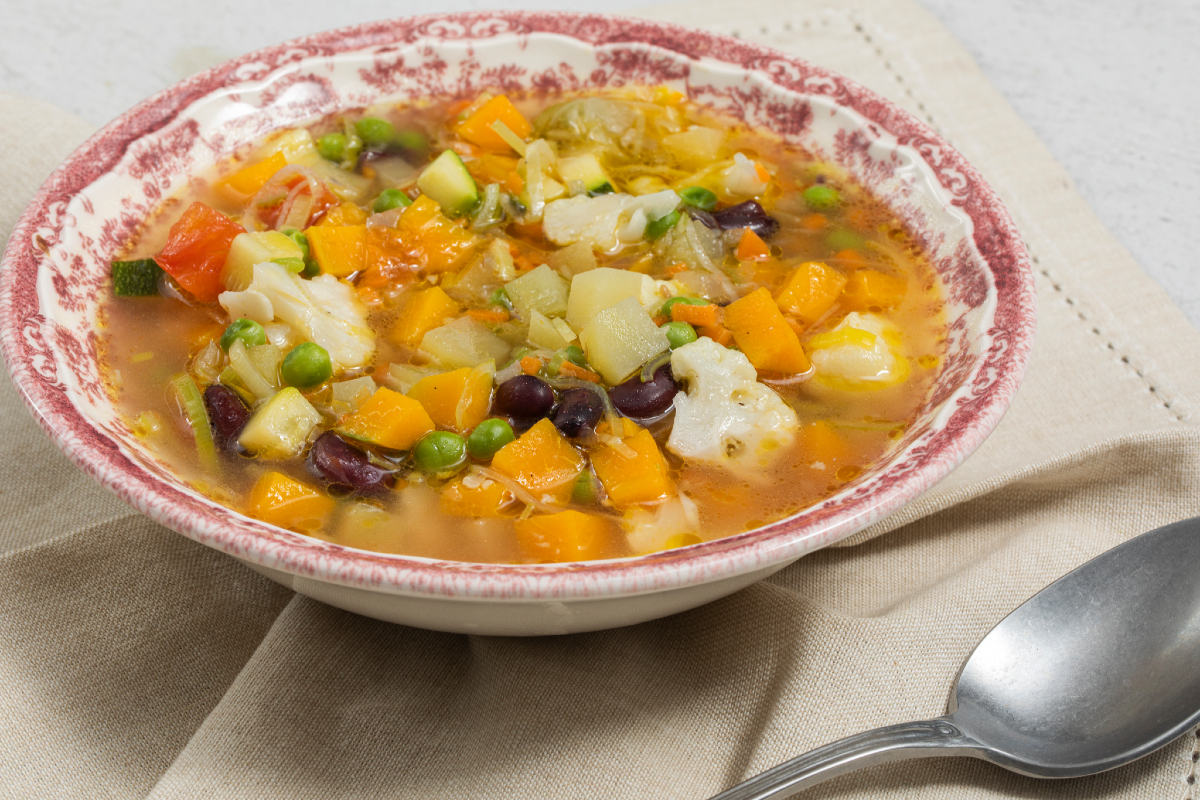Barley Minestrone Soup
- Easy
- 55 min
- Kcal 385

This microwave vegetable minestrone draws its inspiration from Northern Italy, blending flavors from Lombardy and Liguria. I mean, in Milan, they’re all about their minestrone alla milanese. Plus, Genoa’s got the alla genovese style, often finished with a swirl of pesto—yum! And here's the thing, this version really lets those tender veggies shine when you cook them in the microwave. Pretty simple.
This quick minestrone soup is not only easy but also lets you use fresh, in-season ingredients. And it doesn’t take forever. Usually under 15 minutes! The microwave? It keeps everything moist and bright, skipping that bland, overcooked taste. And look, you can totally choose your ingredients—whether classic carrots and potatoes or something fun like orzo or small pasta, often seen in Italian family kitchens.
And listen, these days nobody has time for hours of simmering pots. This easy microwave soup is a real game-changer. For real. People love how you can mix it up—sometimes more green beans or zucchini for a healthy twist, or making it richer with beans or a bit of rice, just like in some Ligurian bowls. The microwave keeps all those fresh flavors crisp and colorful. Which is great.
That's why it's becoming a staple in lists of healthy microwave recipes and fast weeknight dinners. Whether you're whipping up a quick lunch or craving something cozy after work, this microwave vegetable minestrone is filling, nutritious, and tastes like something you'd spend hours making. Really, it’s one of those warm, hearty dishes that feels homemade but won't take over your evening—a dream for busy folks. And with so many ways to switch it up, it never gets boring—just swap in whatever veggies you have, and bam, you get a whole new soup each time. It’s versatile, delicious and really makes the most of your microwave!
You might also like:

To prepare the microwave vegetable minestrone, first wash and dry the vegetables. Remove the pumpkin skin 1. Use a spoon to scoop out the seeds and internal filaments 2. Then slice it into evenly thick slices and then into cubes about 1/2 inch on each side 3.

Trim the zucchini, slice them, and then cut them into cubes the same size as the pumpkin 4. Cut the cauliflower in half 5, remove the central core and separate the florets 6.

Remove the outer part of the leek and cut it into thin rings 7. Peel the potatoes 8, cut them into thick slices, and then into cubes 9.

Also, slice the tomatoes first 10 and then dice them 11. Finely chop the onion 12.

Dice the celery 13, peel the carrots and cut them into strips and then into dice 14. Tie a sprig of rosemary and bay leaves with kitchen string to form an aromatic bundle 15.

In a large Pyrex bowl, place the onions, carrots, and celery, add the leeks and the aromatic bundle 16. Add the pumpkin 17 and the cauliflower 18.

Add the zucchini, potatoes, tomatoes 19, borlotti beans 20, and peas 21.

Pour in the oil 22, season with salt 23 and pepper 34.

Mix everything well 25, then pour in the water 26. Cover the bowl with plastic wrap 27 and microwave at 800 W for 12 minutes.

Remove the aromatic bundle 28 and drizzle with a little oil 29. The microwave vegetable minestrone is ready to be served 30.